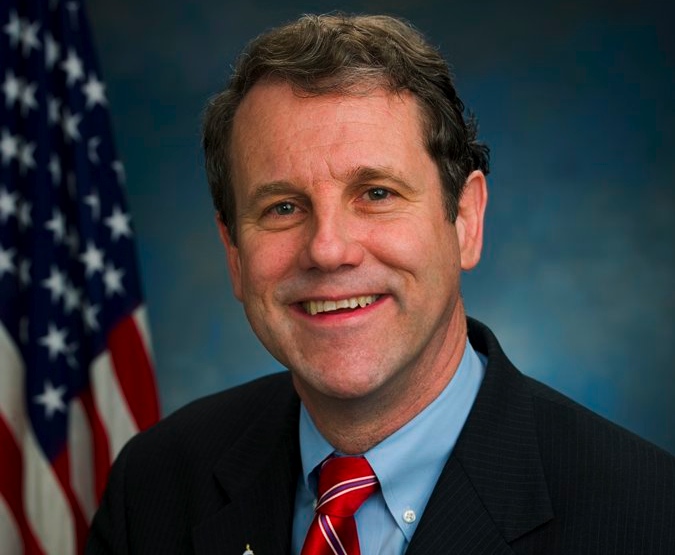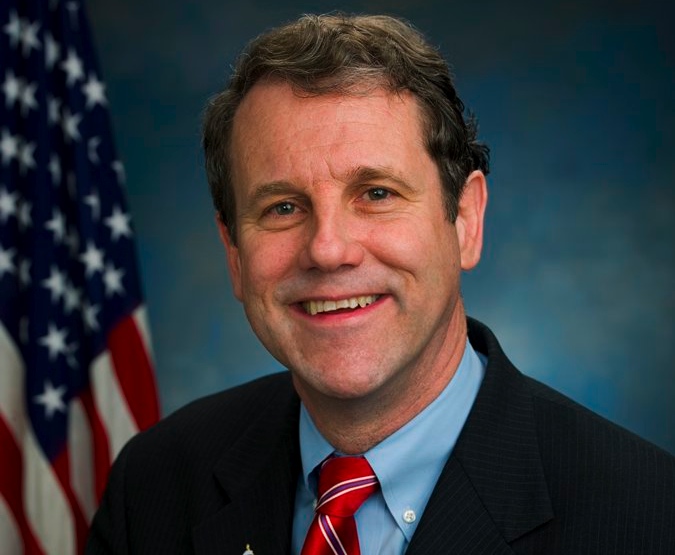 Sen. Sherrod Brown.Cross-posted from the Natural Resources Defense Council.
Sen. Sherrod Brown.Cross-posted from the Natural Resources Defense Council.
There are things to like in Sen. Sherrod Brown’s (D-Ohio) letter to President Obama today about the Clean Air Act and carbon pollution. However, the letter is off base in its concern about EPA’s reasonable steps to assure that big new plants reduce their pollution to protect public health.
Sen. Brown starts by recognizing the achievements of the nation’s 40-year-old air pollution law: “For decades, the Clean Air Act has been a remarkably successful law that has protected the health and well-being of all Americans by significantly reducing the emissions of dangerous pollutants, while still ensuring economic growth. Clean air standards and their implementation must be carefully crafted, however, so as not to unjustifiably impede business and job growth.” Brown also recognizes the imperative to curb the carbon pollution that threatens our health by driving dangerous global warming: “The Supreme Court has required the Environmental Protection Agency (EPA) to move forward with reducing greenhouse gas emissions and addressing the very real danger of climate change, which threatens our nation’s economic, environmental, and energy security.” And he advocates important policies to complement the Clean Air Act’s carbon pollution safeguards with clean energy research, development, and deployment, including key manufacturing technologies such as combined heat and power and recapturing waste heat.
But when Brown turns to the Clean Air Act’s modest measures to minimize carbon pollution from new power plants and other very big new industrial facilities, his letter loses its way. Brown asks Obama to “reconsider” and “reevaluate” those requirements under his Executive Order on regulatory review. He then repeats the standard tale of woe that industry has set forth each and every time the EPA takes a step forward under the Clean Air Act and other health and safety laws, from lead in gasoline to seat belts and airbags.
Yet for 40 years, their bloated claims have fallen flat. All it takes is a quick review of what the law actually says and an examination of the Clean Air Act’s track record of protecting lives, reducing pollution, and saving dollars to lift the veil on industry’s latest fairy tale. The Clean Air Act’s track record shows what can be achieved when EPA is allowed to do its job: a cleaner environment, countless illnesses avoided, and hundreds of thousands of lives saved. That’s why three out of four Americans support the EPA’s setting tougher standards on pollutants such as mercury, smog, and carbon dioxide. They’ve seen the Clean Air Act work for 40 years, and they want it to keep on working to clean up the air they breathe, protect their health, and improve the environment.
Here is the common sense safeguard that the law requires: When a company wants to build a big, new plant that will operate for decades, it must take reasonable steps to reduce how much dangerous pollution it will put into the air. All the Clean Air Act requires is that someone, either a state environmental agency or the federal EPA as a last resort, review what the plant can reasonably do to reduce pollution. All that is required is that a new plant use pollution control measures that are achievable and affordable. If the measures won’t work, or if they are too expensive, they are not required.
Companies have undergone this pre-construction pollution review for more than 30 years for other pollutants like sulfur dioxide, nitrogen oxides, and particulate matter. It has made a big difference in the levels of dangerous pollution that new plants add to our overburdened skies. But it does not stand in the way of new projects: The plants get built, the jobs get created, and the economy keeps growing.
The review for carbon pollution control options is no different. It applies to only the biggest new projects. EPA has carefully tailored the requirements so that it will not apply to any new or expanded facility unless it will emit at least 75,000 tons of carbon pollution per year — no small amount. Despite the disingenuous lobbying claims of the U.S. Chamber of Commerce and other industry groups, the rules cover no schools, hospitals, apartment houses, or churches, because they don’t have carbon emissions on this scale. Likewise, despite shrill alarms from the Farm Bureau, not a single new farm will be covered — not even a huge new animal feeding operation would release enough heat-trapping methane to cross the threshold for review.
In fact, as the World Resources Institute [PDF] has shown, steps to reduce carbon pollution under the Clean Air Act can help make American manufacturing more competitive.
It’s because of the Clean Air Act’s track record that we disagree with Brown that EPA’s actions to reduce dangerous carbon pollution need any “reevaluation.” It’s also why we are confident than any such examination will show once again that Brown is looking for a solution to problems that simply don’t exist.



